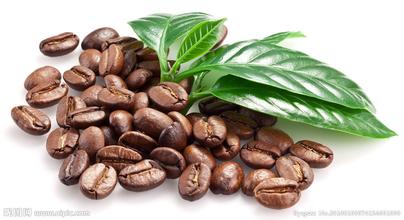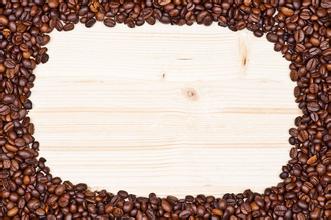Description of Flavor of Coffee beans in Pacamara Manor introduction to Variety treatment in producing areas
Pacamara manor bean
Incht Manor is one of the best estates in Guatemala. If Incht Manor ranks second, no one dares to call it first. Like the famous Emerald Manor in Panama, it holds a global auction with coffee from a single manor. Dare to do so, because the reputation is too loud, the record of winning the championship in the major competitions is unparalleled, and it has almost reached the level of "I am the only competitor".
Pacamara is the "Best Incht" series specially produced by Incht Manor. Experienced farmers carefully select ripe coffee fruits, and then ask cup testers to remove batches that are not up to standard. Under such strict screening criteria, the Pacamara varieties in Incht Manor account for only 8% of the total output, with bright fruit acidity and a very sweet, pure and delicate taste. Few coffee varieties have both sour fruit and obvious sweetness. At the same time, it also brings the taste of nutty chocolate and ripe fruit, which makes you happy. The taste is rich and changeable, which gives us great satisfaction when drinking coffee.
When it comes to the Pakamara species in Saudi Arabia, we have to introduce Pacamara Manor first. In Ecuador in 1984, the fascists could buy the Pakamara Coffee Garden as the new owner. The Falesco family has been growing coffee in the Apaneca mountains since their grandparents for more than a hundred years. Urgado wanted to take a different path from his grandparents and decided to plant a new species, Pacamara, which had just been developed from the agricultural technology unit of Saudi Arabia. He found that this new species had a large and beautiful appearance, and could show a good flavor and aroma under excellent local conditions. He found new hope and found the rising star in his mind, but the first harvest turned out to be the beginning of hard work.
Pacamara bean shape is too large, in the treatment field for peeling and separation, often stuck in the holes or gaps of the machine, the machine must be adjusted from time to time to deal with separately. Due to the limited initial output of Pacamara, coupled with the fact that there are few large seeds in the country, most washing plants lack experience in dealing with large coffee fruits, not to mention extra sieves with larger mesh to specially deal with Pakamara species, so they are naturally reluctant to deal with new species. The problem of wet treatment after harvest will not be solved until 1990 when the Awasan Cooperative released its goodwill and was willing to sign a contract with Ecuador. After Urguado has no worries, with more skilled planting techniques, harvesting coffee cherries with the same maturity, and careful post-harvest treatment, finally make the Pacamara species of Pacamara estate shine! I won the 24 place in 2003, the seventh place in 2005 and the runner-up in 2008, when I and Japan's Maruyama Coffee jointly awarded the runner-up batch.
The introduction of new varieties is always a hard and high-risk attempt, not to mention the high probability of failure. If it succeeds, everyone will follow, but if we do not try to innovate, we will never wait for the chance of success. The sufferings of coffee farmers are not enough.

Important Notice :
前街咖啡 FrontStreet Coffee has moved to new addredd:
FrontStreet Coffee Address: 315,Donghua East Road,GuangZhou
Tel:020 38364473
- Prev

Panama Hartman Estate Coffee Characteristics Flavor Description Processing Variety Taste Introduction
Hartman Manor Panama Coffee Features Flavor Description Processing Variety Taste Introduction His father's coffee business in Santa Clara, Volcan, was established in 1940. Hartman Manor can be said to be the pioneer and representative of Volcan coffee growing areas. Ninety Plus Rosedale Manor, all from Volcan, but Hartman is not only Rosedale, here.
- Next

Introduction to the Variety characteristics of Santa Rita Coffee Bean Flavor description in Colombia
Columbia Santa Rita Coffee Bean Flavor description method Variety characteristics in producing areas Coffee also needs daylight and proper shade, which is most suitable for planting on fertile soil or volcanic ash soil. Therefore, the origin of coffee is widely distributed in South America, Central America, the West Indies, Asia, Africa, Arabia, the South Pacific and Oceania. Such as Ethiopia and Tanzania in Africa
Related
- Does Rose Summer choose Blue, Green or Red? Detailed explanation of Rose Summer Coffee plots and Classification in Panamanian Jade Manor
- What is the difference between the origin, producing area, processing plant, cooperative and manor of coffee beans?
- How fine does the espresso powder fit? how to grind the espresso?
- Sca coffee roasting degree color card coffee roasting degree 8 roasting color values what do you mean?
- The practice of lattes: how to make lattes at home
- Introduction to Indonesian Fine Coffee beans-- Java Coffee producing area of Indonesian Arabica Coffee
- How much will the flavor of light and medium roasted rose summer be expressed? What baking level is rose summer suitable for?
- Introduction to the characteristics of washing, sun-drying or wet-planing coffee commonly used in Mantenin, Indonesia
- Price characteristics of Arabica Coffee Bean Starbucks introduction to Manning Coffee Bean Taste producing area Variety Manor
- What is the authentic Yega flavor? What are the flavor characteristics of the really excellent Yejasuffi coffee beans?

